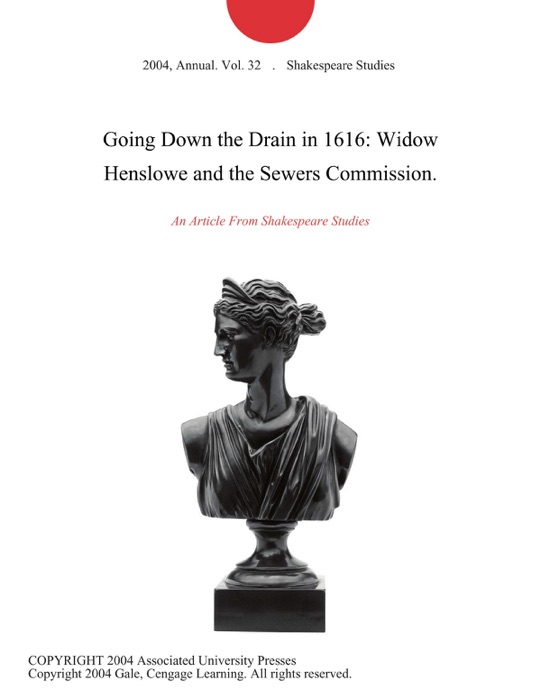(Download) "Going Down the Drain in 1616: Widow Henslowe and the Sewers Commission." by Shakespeare Studies ~ Book PDF Kindle ePub Free

eBook details
- Title: Going Down the Drain in 1616: Widow Henslowe and the Sewers Commission.
- Author : Shakespeare Studies
- Release Date : January 01, 2004
- Genre: Language Arts & Disciplines,Books,Professional & Technical,Education,
- Pages : * pages
- Size : 202 KB
Description
THERE IS, IN THE Department of Manuscripts of the British Library, a small black cardboard box. It is roughly 30 cm. in length, 10 cm. wide, and 10 cm. deep, and it appears to be a relic of the early twentieth century. Inside are four vellum rolls, almost 25 cm. in length and 5 cm. in diameter. One is tied with a frayed pink string. At one end of the box, a brown leather label identifies the contents as "Proceedings of Commission of Sewers for R. Thames, 1612-17." (1) Each roll consists of a series of membranes sewn at the top, and each represents a different report from four Commissions of Sewers that were held at various times throughout the years represented by the collection. The rolls are dated as follows: Roll A ("1 April 1612"), Roll B ("18 January 1615," but really 1616), Roll C ("5 June 1617"), and Roll D ("7 October 1617"). Despite the fact that the records for the counties of Kent and Surrey are filed together most of what remains in these documents relates principally to Surrey. Other early records of the Surrey and Kent Commissioners of Sewers can be found at the London Metropolitan Archive, which holds a series of twenty-four volumes covering (with some areas missing) the period between January 1569 and 1847. (2) The reason that the four rolls with which I am concerned are in the collection of the British Library, rather than the London Metropolitan Archive, has been lost in the annals of time. In addition to providing unique details relating to London local history and topography, sewer records have assisted theater historians for generations in discovering how various theatrical properties were owned, maintained, and utilized. Quoting from an earlier article by C. W. Wallace, G. E. Bentley noted that Wallace had used these records in an attempt to determine whether the Rose Playhouse was standing after 1605. (3) Subsequently, William Ingram made much of the same sources in his biography of Francis Langley, owner of the Swan Playhouse, who bore responsibility for maintaining certain walls and drainage ditches in Paris Garden Manor. (Langley was Lord of the Manor of Paris Garden and this was the site of the Swan Playhouse as well.) (4) Later, Ingram returned to these sources in his discussion of the playhouse at Newington Butts. In this particular case sewer records revealed the names of property owners and the tenants of properties abutting the land upon which the playhouse stood. (5) From this evidence Ingram was able to make several groundbreaking assertions. First, it emerged that there were early performances by the Earl of Warwick's Men at the Butts. Second, it became clear that Jerome Savage, a stage player, was probably the leader of that company. Third, other persons associated with the theater could be identified for the first time, and these figured into the history of Newington Butts, if only marginally. Thus, in this case, sewer records provide flesh information regarding a significant playing company and its performance venues.